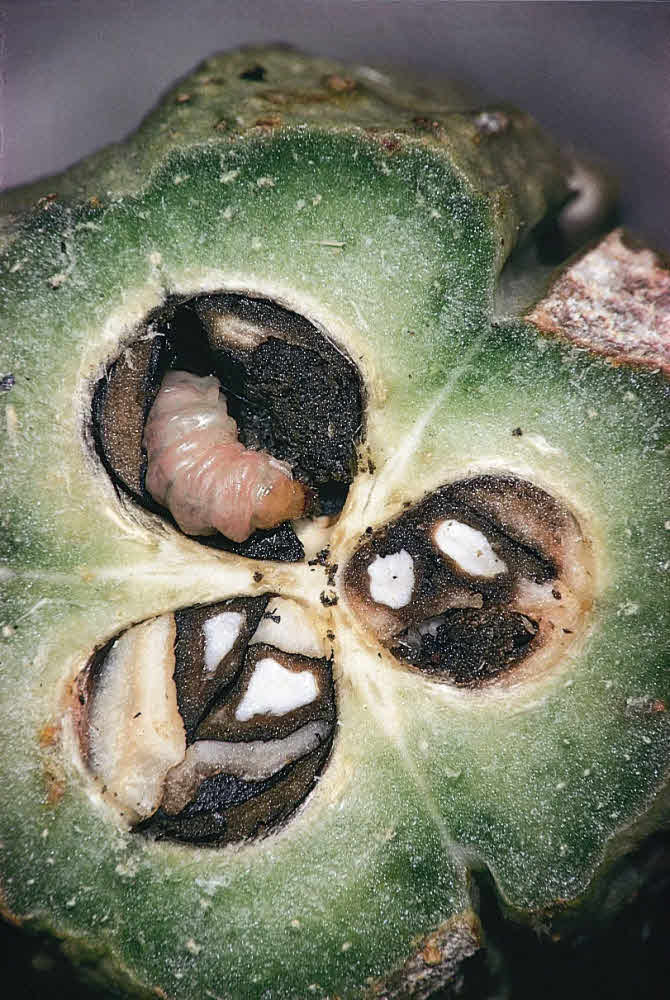We will be looking at Obligate mutualism, but first, we need to see what mutualism is.
Mutualism is a relationship between different species of organisms.
This relationship can be beneficial for one, or both organisms.
Some mutualisms can be detrimental to one of the organisms.
The different mutualisms are:
- Facultative Mutualism is where organisms can benefit from each other, but they can survive without the other. Bees and certain plants have facultative mutualism.
- Trophic Mutualism is where organisms work together, sharing energy and nutrients, to get a greater benefit from the situation. Examples are Rhizobium bacteria and plant roots to gain more nitrogen, and also the bacteria within a cow’s stomach to break down cellulose within plants.
- Defensive Mutualism is where one species receives food or shelter in return for some form of protection. An example of this is specialised fish and shrimps that clean parasites from the skin of much larger fish, and therefore gain some protection.
- Dispersive Mutualism is where pollen or seed is transported in exchange for nectar or juicy fruit. Examples are certain birds eat the fruit and then the seeds pass through them and get deposited in a different place.
- Obligate mutualism is where the relationship relies on both organisms being present, otherwise, they cannot survive without the other. 1
Table of Contents:
So here we look at obligate mutualism where one organism cannot survive without the other and the term is easy to remember because both organisms are obligated, or forced to, rely on one another.
1. Examples of Obligate mutualism
a) Acacia ants
Acacia ants (Pseudomyrmex ferruginea) inhabit the bullhorn acacia (or bullhorn wattle; Vachellia cornigera).
‘Mutualism – biology’ Britannica 2
The ants obtain food and shelter, and the acacia depends on the ants for protection from browsing animals, which the ants drive away.
Neither member can survive successfully without the other, also exemplifying obligative mutualism.”
b) Ficus macrophylla and fig wasps

Ficus macrophylla, commonly known as the Moreton Bay Fig, comes from Australia and has an obligate mutualism with fig wasps.
This means that the figs are only pollinated by fig wasps, and fig wasps can only reproduce in fig flowers:
Figs have an obligate mutualism with fig wasps, (Agaonidae);
‘Pleistodontes froggatti’ Wikipedia 3
figs are only pollinated by fig wasps, and fig wasps can only reproduce in fig flowers.
Pleistodontes froggatti can only reproduce in the syconia of its host species, the Moreton Bay Fig, Ficus macrophylla.”
There were totally failed attempts at growing the plant in Hawaii and California until they introduced the correct wasps.
c) Fungi that live on plant roots
Obligate mutualism…
‘Mutualistic Relationships: Examples’ & Types’ Study.com 4
Another example is the mycorrhizal (pronounced ‘my-core-rye-zal’) fungi that live on plant roots.
The plant roots take advantage of the increased water uptake from the fungi, and the fungi get nutrients from the plant.”
The Bible tells us that God created all creatures and plants according to their ‘kinds’ but this does not mean ‘species’.
Evolution often gives fluffy descriptions of how we evolved, this article looks at Evolutionary ‘facts’.
2. How does evolution explain Obligate mutualism?
The quote below mentions ‘Wolbachia’ which is a genus of intracellular bacteria that infects mainly arthropod species:
Wolbachia is best known as a facultative endosymbiotic parasite, manipulating host reproduction.
‘The evolution of obligate mutualism: if you can’t beat ’em, join ’em’ Cell.com 5
However, it has also evolved as an obligate mutualist at least twice.
In a recent paper, Pannebakker et al. identify a possible mechanism for such a transition from facultative parasitism to obligate mutualism in a parasitic wasp in which Wolbachia are required for producing eggs (oogenesis).
Their proposed mechanism suggests that compensatory evolution in the host to counter the harmful effects of Wolbachia is the basis of this evolutionary transition.”
Here’s another example of obligate mutualism and trying to explain the relationship within an evolutionary context:
Joshua trees… are the sole host plants for two species of yucca moths, which lay their eggs in Joshua tree flowers and nowhere else.
‘Obligate Mutualism Blooms In The Desert by Candace Fallon 6
The Joshua trees, in turn, completely rely on these yucca moths for pollination.
Theirs is a classic case of obligate mutualism…
the two species of Joshua trees, the eastern Joshua tree (Yucca jaegeriana) and the western Joshua tree (Y. brevifolia), overlap, which means it is also the only place we know of where their two sister species of moth pollinators (Tegeticula antithetica and T. synthetica) coexist.
The two moth species look almost exactly the same, but differ slightly yet significantly in body size and in the length of their ovipositors (egg-laying organs).
In fact, the shape and length of the flower styles of each Joshua tree species perfectly match the differences in the body length and ovipositor sizes of the two moth species.
Pure coincidence? Or is some other force, like natural selection, at play?…
it appears that natural selection is acting to make moth ovipositors and flower styles match in length.
And while style length is certainly one of the traits under selection, it is not the only one.
Intriguingly, natural selection appears to be maintaining species separation even where the two Joshua tree species overlap and hybridize.
But what specific traits are responsible for sustaining this divergence?

Evolution could explain obligate mutualism with the organism changing to suit its environment, but I’m not sure it could solve the dilemma of how the relationship started from scratch with the organisms being exclusively dependent on each other.
See this article on the theory of natural selection, the ‘proof’ of bacteria and dogs evolving and Bible kinds are not species.
Look at the Big Bang theory and other theories in trying to find the age of the universe.
Do you think that dragons were real creatures?
3. How does Creation explain Obligate mutualism?
Creation allows for changes to happen, for example, look at the diversity within dogs, but they are still all dogs.
In Creation the power to change has always been within the DNA, therefore the organism can change to keep up with deeper-throated flowers (for example).
The concept of having the two organisms being totally dependent upon each other could have been programmed in from the very start by an ‘Intelligent Designer’.
Is there any proof of Evolution in similar bone structures?
In nature, we see some amazing things for example the American Golden Plover, the Grunion fish, spiders with their extraordinary webs, the Tailor Bird with its nest, clever bees and the Robber Crab, see What is hard for evolution to explain?
Polaris is the Pole Star and it can guide us on Earth, but its distance from us is causing controversy amongst astronomers.


2 responses to “12. Obligate mutualism”
Well said.
I am hoping that one day soon, the whole pack of cards will come tumbling down.
Thank you so much! We desperately need all of us pulling on the rope to drag society from error to truth. Darwinism is so ludicrous and yet it is indeed the story of the Emperor’s New Clothes. Once people see and admit it is completely absurd, the sea-change in the ruling paradigm will sweep popular absurdists like Richard Dawkins from the public eye and perhaps the world will begin looking at finding a relationship with God, the Creator?